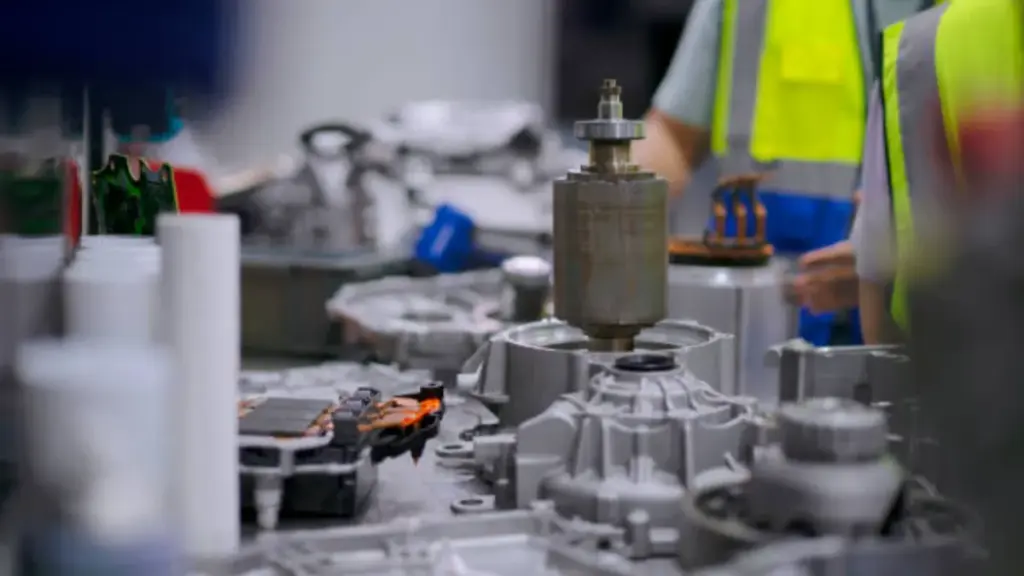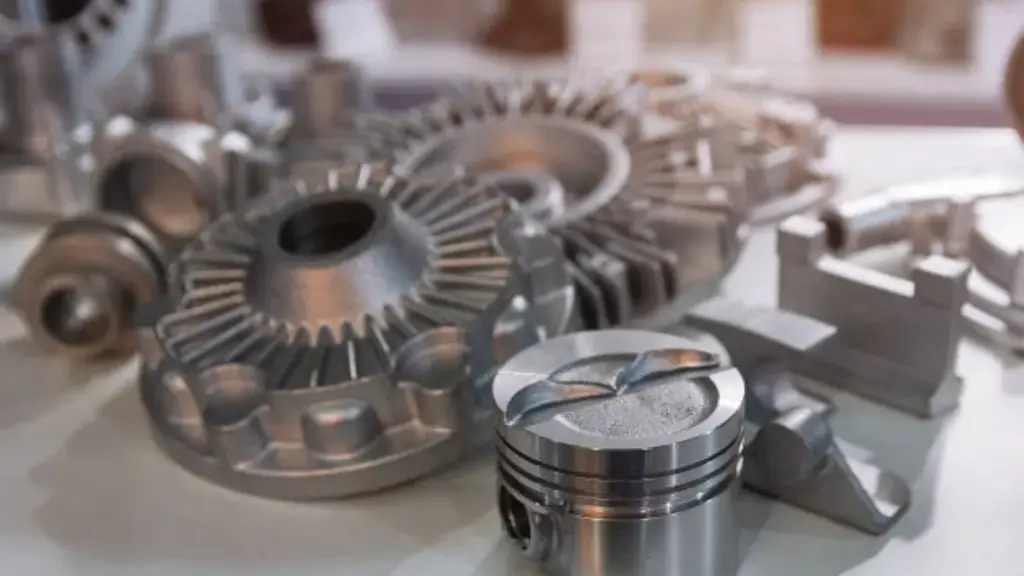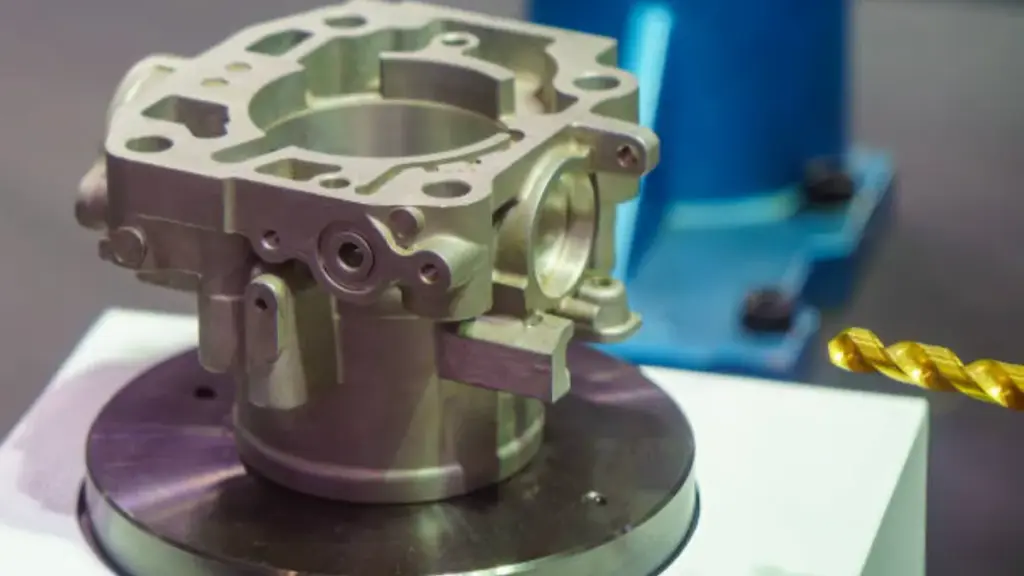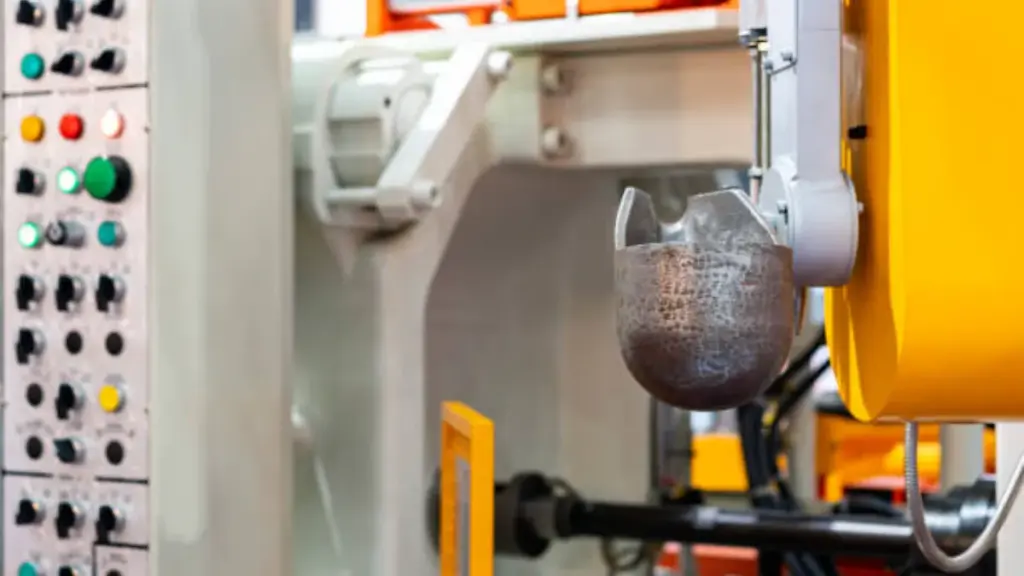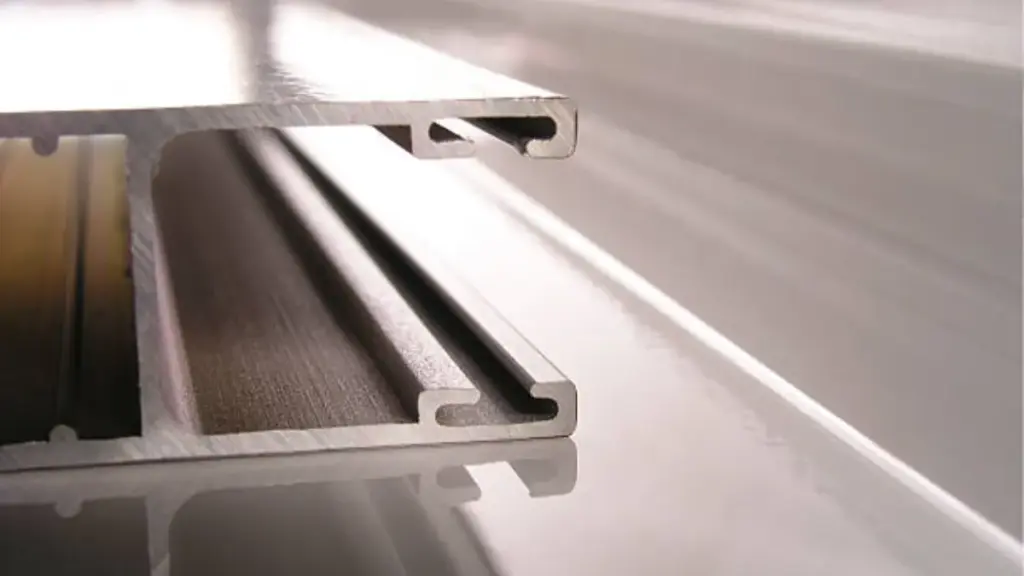Quando pensamos em fabricar durável, leve, e componentes metálicos de formato intricados, A fundição de alumínio geralmente leva o centro do palco. Mas o que exatamente é fundição de alumínio, E por que o alumínio é o metal de escolha para este processo? Vamos mergulhar nas porcas e parafusos deste fascinante método de fabricação.
O que é fundição sob pressão de alumínio?
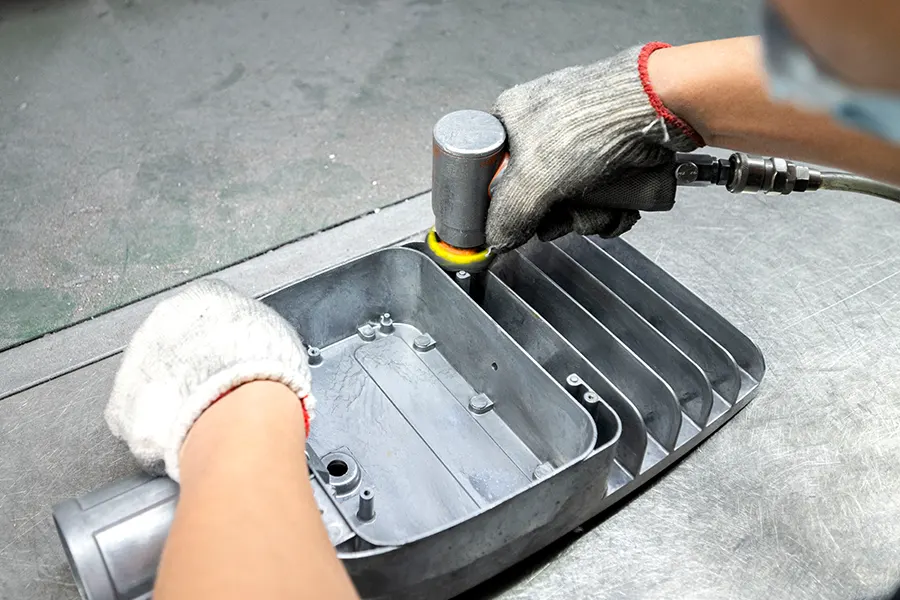
A fundição de matriz é um processo de fundição de metal que envolve forçar a liga de alumínio fundido a uma cavidade de molde sob alta pressão. É como fazer uma versão metal de um molde de gelatina – apenas, em vez de gelatina, Estamos usando alumínio! Este método permite a produção de formas complexas com alta precisão e acabamento superficial.
Processo de fundição de matriz de alumínio
O processo de fundição de matriz de alumínio envolve várias etapas importantes, Da preparação do molde à ejeção do elenco. Vamos quebrá -lo.
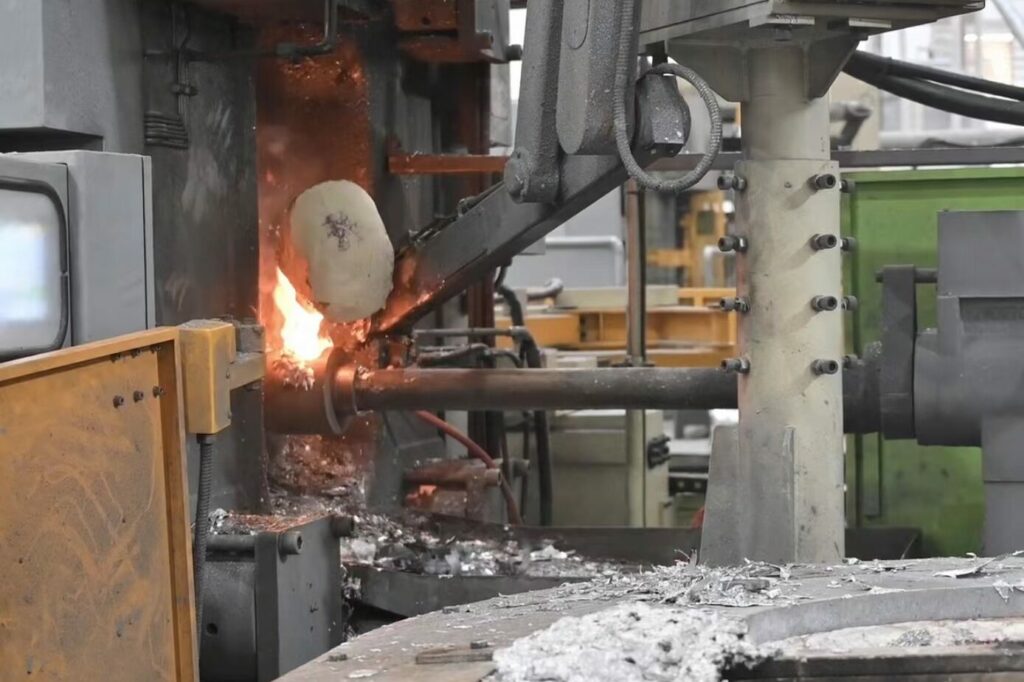
#1: Preparação de molde
Primeiras coisas primeiro, Precisamos de um molde. Este molde, normalmente feito de aço, é criado com as especificações exatas da parte desejada. É como ter um cortador de biscoitos personalizado para metal!
#2: Fusão e injeção de alumínio
Assim que o molde estiver pronto, É hora de aquecer as coisas. Lingotes de alumínio são derretidos em um forno e depois injetados na cavidade do molde sob alta pressão. Pense nisso como injetar alumínio fundido em um balão em forma de molde de metal!
#3: Resfriamento e Solidificação
Depois que o alumínio é injetado no molde, Ele esfria e solidifica rapidamente para tomar a forma da cavidade do molde. Este processo acontece mais rápido do que você pode dizer “Solidificação de alumínio.”
#4: Ejeção do elenco
Uma vez que o alumínio solidificou, a peça recém-formada é ejetada do molde, Pronto para ser aparado, finalizado, e colocar para o trabalho.
Ligas de alumínio comuns usadas na fundição
Fundição em alumínio não seria possível sem as ligas certas. Vamos dar uma olhada em algumas das ligas de alumínio mais comuns usadas no processo de fundição.
Liga de alumínio 380
Liga de alumínio 380 é uma das ligas mais amplamente usadas no fundamento de matrizes devido à sua excelente castabilidade e propriedades mecânicas. Oferece boa força e dureza, junto com excelente resistência à corrosão. Liga 380 é frequentemente usado para peças que requerem formas complexas e paredes finas, tornando -o uma escolha popular em várias indústrias, incluindo eletrônicos automotivos e de consumo.
Liga de alumínio 383
Liga de alumínio 383 é semelhante à liga 380 Mas com maior resistência a rachaduras a quente, tornando-o particularmente adequado para aplicações de fundição de matriz que envolvem altas temperaturas. Oferece boa fluidez e é frequentemente usado para componentes que requerem excelente acabamento superficial e estabilidade dimensional.
Liga de alumínio 360
Liga de alumínio 360 é conhecido por sua alta resistência à corrosão e excelente tensão na pressão. É comumente usado para peças que requerem fluidez e ductilidade superiores, como caixas para componentes elétricos e acessórios de encanamento. Liga 360 também é altamente maquinável, tornando-o adequado para peças que requerem operações de usinagem pós-castagem.
Liga de alumínio 390
Liga de alumínio 390 é uma liga de alta resistência, com excelente resistência ao desgaste e estabilidade dimensional. É frequentemente usado para peças que requerem altas propriedades mecânicas, como componentes do motor e peças estruturais em aplicações automotivas e aeroespaciais. Liga 390 oferece boa castabilidade e é adequado para produzir formas complexas com paredes finas.
Tipos de fundição de matriz de alumínio
Agora que entendemos o processo, Vamos explorar os dois principais tipos de fundição de matrizes de alumínio: Câmara quente e moldagem da câmara fria.
Fundição sob pressão de câmara quente
Em fundição sob pressão em câmara quente, O sistema de injeção está imerso no banho de metal fundido. Este processo é ideal para metais com baixos pontos de fusão, como zinco e magnésio. É como fazer mágica de metal em um caldeirão borbulhante!
Fundição sob pressão em câmara fria
Fundição sob pressão em câmara fria, por outro lado, envolve carregar o metal derretido na câmara fria antes de injetá -la no molde. Este método é preferido para metais com altos pontos de fusão, como alumínio e cobre. É como derramar cuidadosamente o metal líquido em um molde de espera.
Tipos de máquinas de fundição de matrizes de alumínio
As máquinas de fundição de matrizes são projetadas para suportar as altas pressões e temperaturas envolvidas no processo de fundição. Eles vêm em várias formas e tamanhos, cada um adequado para diferentes necessidades de produção. Existem três tipos principais de máquinas de fundição:
- Máquinas de câmara fria horizontal: Essas máquinas são ideais para produção de alto volume e são comumente usadas em indústrias como automotivo e aeroespacial.
- Máquinas de câmara fria vertical: As máquinas de câmara fria vertical são usadas para pequenas execuções de produção e oferecem maior flexibilidade em termos de tamanho e configuração do molde.
- Máquinas de câmara quentes horizontais: Eles são mais adequados para metais com baixos pontos de fusão e são frequentemente usados para aplicações de fundição de zinco e matriz de magnésio.
Principais componentes de uma máquina de fundição de alumínio
Agora que conhecemos os tipos de máquinas usadas, Vamos nos aprofundar nos principais componentes que os fazem marcar.
Unidade de injeção
A unidade de injeção é responsável por derreter o metal e injetar -o na cavidade do molde sob alta pressão. É como o coração batendo a máquina de fundição, bombear metal fundido para o molde de espera.
Unidade de fixação
A unidade de fixação mantém as duas metades do molde juntos sob imensa pressão durante o processo de fundição. É como os braços fortes que mantêm tudo no lugar enquanto a mágica acontece.
Sistema hidráulico
O sistema hidráulico fornece a energia necessária para operar os vários componentes da máquina de fundição. É como os músculos que alimentam toda a operação, Garantir que tudo funcione bem.
Vantagens do fundamento de alumínio
Agora que temos um entendimento sólido de como a fundição de alumínio funciona, Vamos explorar algumas de suas principais vantagens.
Alta proporção de força / peso
As peças fundidas de dado de alumínio oferecem uma excelente proporção de força-peso, tornando -os ideais para aplicações onde a economia de peso é crucial, como nas indústrias automotivas e aeroespaciais.
Precisão dimensional
Graças à precisão do processo de fundição, Peças de alumínio podem ser produzidas com tolerâncias rígidas e alta precisão dimensional, garantindo um ajuste perfeito todas as vezes.
Produção de alta velocidade
A fundição de dado de alumínio é um processo altamente eficiente que permite a produção de grandes quantidades de peças em um período de tempo relativamente curto. É como o raio dos processos de fabricação!
Custo-benefício
Apesar de seus muitos benefícios, Casting de matriz de alumínio continua sendo uma solução de fabricação econômica, oferecendo economias significativas em relação a outros métodos de produção, especialmente para produção de alto volume.
Formas complexas e paredes finas
Uma das vantagens mais significativas da fundição de matrizes de alumínio é sua capacidade de produzir peças com geometrias complexas e paredes finas que seriam impossíveis ou proibitivamente caras para alcançar o uso de outros métodos.
Aplicações de fundição sob pressão de alumínio
Agora que sabemos por que o alumínio fundindo pedras, Vamos explorar algumas de suas aplicações mais comuns em vários setores.
Indústria Automotiva
De componentes do motor a peças de transmissão, Casting de matriz de alumínio desempenha um papel crucial no indústria automotiva, onde leve, Peças duráveis são essenciais para a eficiência e o desempenho de combustível.
Eletrônicos de consumo
No mundo de eletrônicos de consumo, A fundição do dado de alumínio é usada para criar caixas elegantes e leves para tudo, desde smartphones a laptops, garantir o estilo e a durabilidade.
Indústria aeroespacial
Em aplicações aeroespaciais, onde o peso é um fator crítico, A fundição do dado de alumínio é usada para produzir componentes leves, mas incrivelmente fortes, para aeronaves e espaçonave.
Equipamento médico
Na indústria médica, A fundição de matriz de alumínio é usada para produzir uma ampla gama de componentes, De instrumentos cirúrgicos a dispositivos médicos, onde precisão e confiabilidade são fundamentais.
Máquinas industriais
De bombas e válvulas a caixas de câmbio e caixas, A fundição de matriz de alumínio é amplamente utilizada no setor de máquinas industriais para produzir de alta qualidade, componentes duráveis que podem suportar condições operacionais exigentes.
Controle de qualidade em fundição de dado de alumínio
Mantendo padrões estritos de controle de qualidade é essencial para garantir a integridade e a consistência das peças fundidas de matrizes de alumínio. Vamos explorar algumas medidas de controle de qualidade comuns.
Métodos de inspeção
Da inspeção visual a técnicas avançadas de teste não destrutivas, Uma variedade de métodos de inspeção é usada para verificar a qualidade e a integridade das peças fundidas.
Defeitos e sua prevenção
Defeitos comuns no moldagem de matrizes de alumínio, como porosidade, encolhimento, E o frio se fecha, pode ser minimizado através do controle de processo adequado, seleção de materiais, e otimização do projeto.
Escolhendo o fabricante certo de fundição de alumínio
Com tantos fabricantes de fundição por lá fora, Escolher o certo pode ser uma tarefa assustadora. Aqui estão alguns fatores -chave a serem considerados ao selecionar um fabricante.
Experiência e Conhecimento
Procure um fabricante com um histórico comprovado de sucesso e vasta experiência em elenco de alumínio. Uma empresa que conhece os meandros do processo tem maior probabilidade de fornecer peças de alta qualidade que atendem às suas especificações.
Certificações de qualidade
Certifique -se de que o Fabricante de fundição de matriz é certificado para padrões do setor como ISO 9001 e IATF 16949, que demonstram seu compromisso com a qualidade e a melhoria contínua.
Revisões de clientes
Confira as análises e depoimentos de clientes para ter uma noção da reputação do fabricante e do nível de satisfação do cliente. Um fabricante com uma sólida reputação e feedback positivo de clientes anteriores tem maior probabilidade de atender às suas expectativas.
Conclusão
Para concluir, A fundição de alumínio é um processo de fabricação altamente versátil e econômico que oferece inúmeras vantagens sobre outros métodos de produção. De sua capacidade de produzir formas complexas com alta precisão até sua ampla gama de aplicações em vários setores, Casting Die Aluminium continua a jogar

